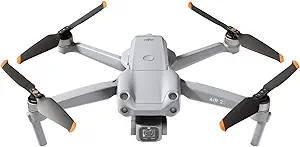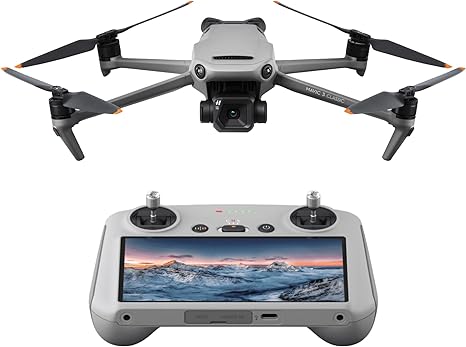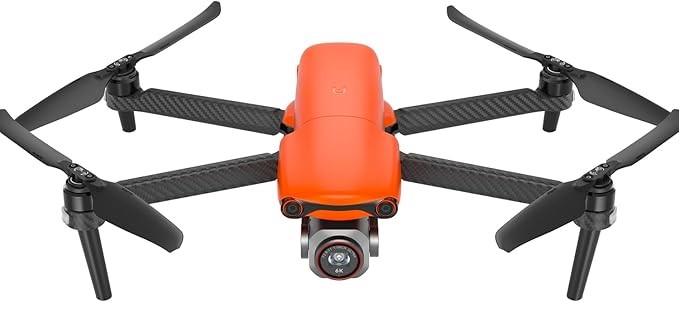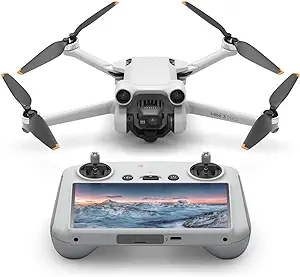There’s something magical about capturing the world from above. Rolling hills, jagged cliffs, shimmering lakes—all take on a whole new perspective when viewed from the sky. As someone who loves photography and exploring the great outdoors, investing in the best drones for landscape photograpy was one of the best decisions I’ve made.
If you’ve been thinking about using drones to elevate your photography game, this guide is for you. From choosing the right drone to tips on shooting epic landscapes, I’ll cover everything you need to know. And yes, I’ll share a few personal stories along the way to keep it fun and relatable!
Why Use Drones for Landscape Photography?
Landscape photography is all about capturing the beauty of nature, and drones give you the power to see and shoot the world in ways traditional cameras can’t. Here are just a few reasons why drones with cameras are perfect for landscape photography:
- Unique Perspectives: Drones for photography let you shoot from heights and angles that would otherwise be impossible—think cliffs, dense forests, and secluded beaches.
- Expansive Views: Wide-angle shots from above capture the grandeur of a scene, giving your audience a sense of scale and wonder.
- Flexibility: Drones can fly to hard-to-reach places, like over water or deep canyons, without you ever leaving the ground.
- Creativity Unleashed: Aerial shots give you room to experiment with patterns, symmetry, and compositions you might not notice from the ground.
How to Choose the Right Drone for Landscape Photography
When I bought my first drone, I was overwhelmed by the options. Do I go for something high-end or start small? Should I prioritize camera quality or portability? Here are the key features to focus on:
1. Camera Quality
For landscape photography, a high-resolution camera is a must. Look for drones with at least a 12 MP sensor, but 20 MP or more is ideal for crisp, detailed shots. Bonus points if the camera supports RAW photography, which gives you more editing flexibility.
- Personal Pick: I started with the DJI Air 2S, which boasts a 1-inch sensor and 20 MP resolution. The clarity of my mountain shots blew me away.
2. Battery Life
Landscape photography often involves long shoots in remote areas. A drone with a solid 25–30 minutes of flight time per battery is a lifesaver. Always carry extra batteries!
3. Portability
If you’re hiking to your shoot location, a lightweight, foldable drone will be much easier to carry. Trust me, lugging heavy gear up a hill isn’t fun.
4. Stability and Wind Resistance
Nature can be unpredictable, and landscapes often come with strong winds. Choose a drone with good stability and gimbal stabilization for smooth footage and sharp photos.
5. Obstacle Avoidance
Drones with obstacle detection are invaluable when flying in complex terrains like forests or near cliffs. I’ve avoided many crashes thanks to this feature.
Top Drones for Landscape Photography
Here are some of the best drones to consider for capturing stunning landscapes:
1. DJI Air 2S
- Camera: 1-inch sensor, 20 MP
- Battery Life: ~31 minutes
- Why It’s Great: Compact yet powerful, this drone offers incredible image quality and performs well in low light, making it perfect for sunrise and sunset shots.

2. DJI Mavic 3
- Camera: Dual-camera system with a 4/3 CMOS sensor
- Battery Life: ~46 minutes
- Why It’s Great: This premium drone is a landscape photographer’s dream, with outstanding image clarity and dynamic range.

3. Autel Evo Lite+
- Camera: 1-inch sensor, adjustable aperture (f/2.8–f/11)
- Battery Life: ~40 minutes
- Why It’s Great: Offers excellent performance and stunning image quality, plus it’s great for low-light photography.

4. DJI Mini 3 Pro
- Camera: 1/1.3-inch sensor, 48 MP
- Battery Life: ~34 minutes
- Why It’s Great: Ultra-light and budget-friendly, it’s perfect for beginners who want portability without sacrificing quality.

Tips for Stunning Drone Landscape Photography
Once you’ve chosen your drone, it’s time to start shooting! Here are some tips that have helped me capture breathtaking aerial shots:
1. Plan Your Shots
Before heading out, research your location using tools like Google Earth or drone apps. Look for interesting features like winding rivers, mountains, or unique patterns in the landscape.
- Example: I once planned a sunrise shoot over a salt flat. Using Google Earth, I identified a spot with reflective puddles that created a mirror effect. The results were stunning!
2. Shoot During Golden Hours
Lighting is everything in photography. Shoot during sunrise or sunset for soft, warm light that adds depth and drama to your landscapes.
3. Experiment with Angles and Heights
Try different altitudes and angles to find the most compelling composition. Overhead shots, low flybys, and angled perspectives can all create unique effects.
4. Use Leading Lines and Patterns
Look for natural lines (like rivers or roads) that guide the viewer’s eye through the image. Aerial views often reveal patterns in nature that aren’t visible from the ground.
5. Bracket Your Shots
Take multiple photos at different exposures to ensure you capture all the details in highlights and shadows. This is especially helpful for sunrise and sunset shots.
6. Follow Local Regulations
Always check local drone laws and respect no-fly zones. Flying responsibly ensures you can keep enjoying this hobby.
My Favorite Drone Landscape Experience
One of my most memorable experiences with drones for landscape photography was during a trip to the Pacific Northwest. I hiked to a remote cliff overlooking the coastline, where the ocean met dramatic, jagged rocks. As I launched my DJI Air 2S, the view from above was breathtaking—waves crashing against the cliffs, gulls flying below the drone, and golden light casting long shadows.
I experimented with different angles, capturing both wide shots of the coastline and close-ups of the waves curling around the rocks. The final images were so mesmerizing that they became the centerpiece of my portfolio.
Editing Your Drone Photos
To make your drone shots truly pop, post-processing is essential. Here’s how I edit my aerial landscapes:
- Adjust Exposure and Contrast: Bring out details in shadows and highlights.
- Enhance Colors: Boost vibrancy and adjust the white balance for natural tones.
- Crop for Composition: Straighten horizons and adjust the framing for balance.
- Use Noise Reduction: Minimize grain in low-light shots.
- Sharpen Details: Bring out textures in elements like rocks or tree canopies.
Software like Lightroom or Photoshop is great for fine-tuning your images.
Final Thoughts
Drones have opened up a whole new world of possibilities for landscape photographers. Whether you’re an experienced shutterbug or a beginner looking to explore aerial photography, there’s a drone out there for you. With a little practice and creativity, you can capture breathtaking images that showcase the beauty of our planet from a fresh perspective.
So, grab your drone, head outdoors, and let your imagination take flight—literally!
As an Amazon Associate, I earn a commission for qualified purchases.
Learn more on my Privacy Policy page.
